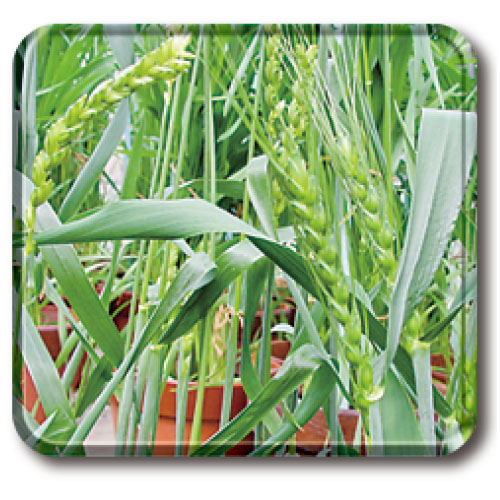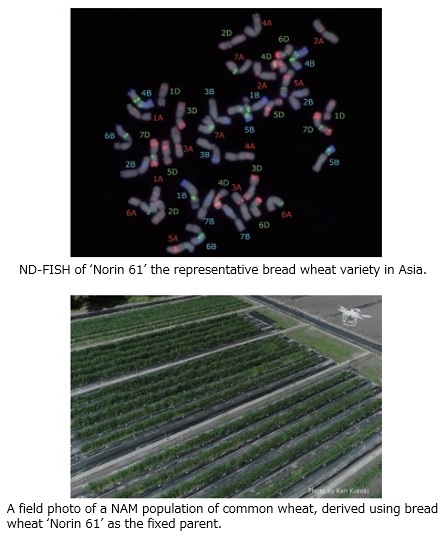

- Core Center:Graduate School of Agriculture, Kyoto University
- Principal Investigator:Ryohei Terauchi
- FAX:+81-75-934-4334
概要Overview
 Wheat, one of the world’s three major cereals, has a complex genome structure that can be diploid (2n = 14; Einkorn wheat), tetraploid (2n = 28; Emmer wheat), or hexaploid (2n = 42; common wheat). Recent scientific advances have made whole genome sequence information and transformation available, opening new doors for wheat science research. Wheat research can contribute to everything from basic biological science to global food issues.
Wheat, one of the world’s three major cereals, has a complex genome structure that can be diploid (2n = 14; Einkorn wheat), tetraploid (2n = 28; Emmer wheat), or hexaploid (2n = 42; common wheat). Recent scientific advances have made whole genome sequence information and transformation available, opening new doors for wheat science research. Wheat research can contribute to everything from basic biological science to global food issues.
Stock
・Landraces/Cultivars: about 10,800 lines
・Wild species: about 4,792 strains
・Experimental lines: about 1,575 strains
・NAM population of common wheat: 4,892 lines
Subjects in the NBRP programs related to “Wheat”
【 Value addition subprogram/ Genome Information Upgrading Program 】
| FY2023-FY2024 | デュラムコムギ標準品種 ‘Langdon’ のゲノム情報整備 (in Japanese) |
| FY2019 | Genome Sequencing of parental accessions of the NAM population of East Asian wheat (in Japanese) |
| FY2017 | Garnering fundamental information on wheat genomic diversity through de novo sequencing of the standard Japanese wheat cultivar Norin 61 (in Japanese) |
| FY2009 | Full-length cDNA resources of common wheat |
| FY2007 | Full-length cDNA resources of bread wheat |
| FY2002-FY2003 | Genome Information Upgrading Program : FY2002-FY2006 |
